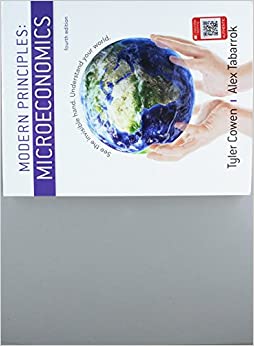Question
Many cities are trying to reduce the consumption of sugar-sweetened beverages (SSB). Assume Los Angeles is considering two alternatives: (1) Taxing consumers 1 cent per
Many cities are trying to reduce the consumption of sugar-sweetened beverages (SSB). Assume Los Angeles is considering two alternatives: (1) Taxing consumers 1 cent per ounce of SSB they purchase, or (2) Subsidizing manufacturers 1 cent per ounce of bottled water that consumers purchase, meaning the city of Los Angeles sends 1 cent per ounce of bottled water purchased to the manufacturer. The status-quo (pre-tax, pre-subsidy) markets for SSB and bottled water are shown in the respective figures below. For simplicity, assume consumers purchase SSB and bottled water directly from manufacturers and that these markets are competitive. Also assume SSB and water are partial, though not perfect, substitutes.
Q1: If Los Angeles chooses to tax consumers 1 cent per ounce of SSB they purchase, then what occurs in the SSB market?
A. Supply decreases (shifts left) until the vertical difference between the original and new supply equals the tax
B. Supply increases (shifts right) until the vertical difference between the original and new supply equals the tax
C. Demand decreases (shifts left) until the vertical difference between the original and new demand equals the tax
D. Demand increases (shifts right) until the vertical difference between the original and new demand equals the tax
E. No change to supply or demand occurs
Q2: As in the previous question, if Los Angeles chooses to tax consumers 1 cent per ounce of SSB they purchase, then what happens to the equilibrium price in the SSB market? The equilibrium price is the price marked on the SSB that does not include the tax.
Options:
Decreases
Stays the same
Increases
Q3: Following from the previous question, if Los Angeles chooses to tax consumers 1 cent per ounce of SSB they purchase, then the new equilibrium price plus the tax for SSB is ______ the original equilibrium price for SSB.
Options:
lower than
the same as
higher than Q4: As in the previous question, Los Angeles chooses to tax consumers 1 cent per ounce of SSB they purchase. However, assume the original market (shown in the set up to this series of questions) had a more inelastic supply of SSB. As compared to the original market, who would now bear more of the tax?
Options:
Consumer
Manufacturer
No change because the consumer is still paying the tax
Step by Step Solution
There are 3 Steps involved in it
Step: 1

Get Instant Access to Expert-Tailored Solutions
See step-by-step solutions with expert insights and AI powered tools for academic success
Step: 2

Step: 3

Ace Your Homework with AI
Get the answers you need in no time with our AI-driven, step-by-step assistance
Get Started


